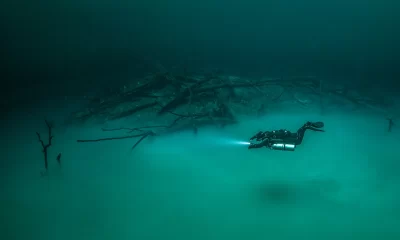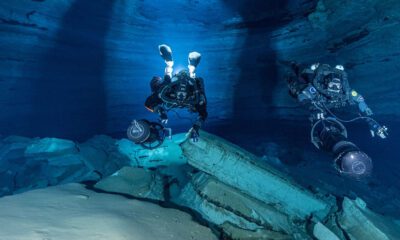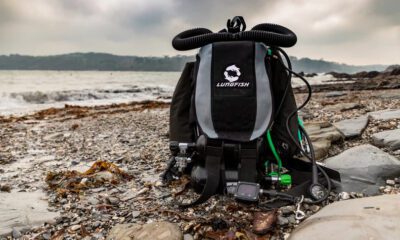Latest Features
Has Rebreather Diving Gotten Safer?
The view among many industry insiders, Pre-RF4, was that rebreather diving has gotten safer—an improvement from the estimate that CCR divers were 5-10x more likely to die than their open circuit counterparts, which was put forth at RF3 (2012). Afterall, aren’t most people doing their pre-dive checklists? Based on the most comprehensive analysis to date conducted by DAN research director Frauke Tillmans, safety has not improved that much from RF3, as InDEPTH editor Ashley Stewart explains. The rebreather community clearly has more work to do!
By Ashley Stewart. Images by Jason Brown, BARDOPhotograhic unless noted.

Rebreather divers are dying at an estimated rate of two to four deaths per 100,000 dives, according to research revealed at Rebreather Forum 4 by Divers Alert Network’s Dr. Frauke Tillmans.
The research, as Tillmans told InDEPTH, is not substantially different from the analysis made by Dr. Andrew Fock at the last forum (RF3) in 2012. Fock at the time estimated that the risk of dying on a rebreather was five to 10 times the risk of open-circuit scuba. (Fock AW Analysis of recreational closed-circuit rebreather deaths. 1998–2010. Diving Hyperb Med 2013;43(2):78-85).
While the situation is still murky due to underreporting of incidents and a lack of denominator information (meaning we can only make educated guesses at how many dives are done), what is clear is that rebreather diving safety has not improved as much as many in the industry expected over the past decade.
“I struggle to accept that CCR divers are still dying at a concerning rate and although some promising technology development is underway to mitigate at least the big Hs (hyperoxia, hypoxia, hypercapnia), we are still not there yet,” Tillmans said.
“The important part is that there appears to be less of an improvement than some might have expected,” Hyperbaric and Diving Medicine Research Chair Neal Pollock said. “What we can say is that things aren’t improving much and therefore something different needs to be done,” Gareth Lock of the Human Diver said.

The Data
Tillmans, Divers Alert Network (DAN) research director, reported that at least 241 rebreather divers have died since RF3 (2012) at an estimated rate of 2 to 4 deaths per 100,000 dives. Note by comparison, skydiving deaths ranged from 0.28-0.45 deaths per 100,000 jumps for the period 2018-2021 according to the United States Parachute Association (USPA: How safe is skydiving?), making rebreather diving 10x as risky as skydiving, though significantly less risk than base jumping. (Pollock cautions, “There is a longstanding tradition of comparing event rates between activities, but the results lose value when the confidence in the data from the different activities is not similar.”)
As Tillmans told InDEPTH, there’s still a lot we don’t know.
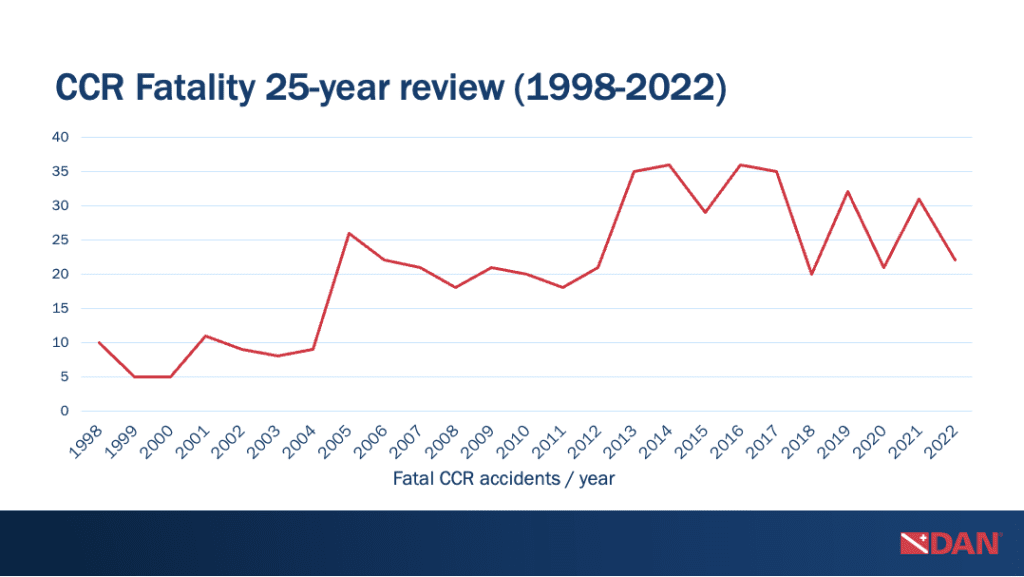
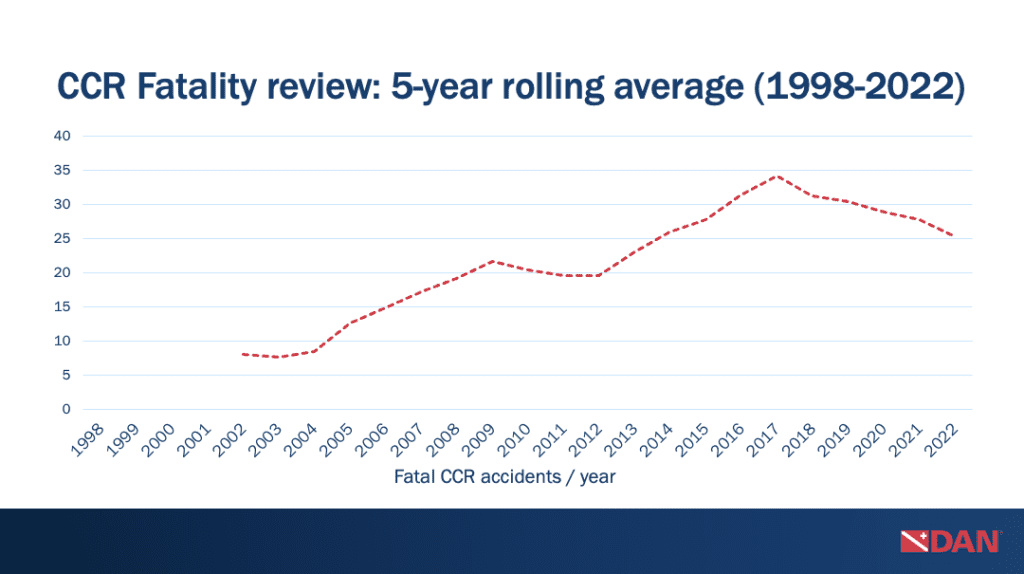
“The problem is that tracking fatalities is almost a meaningless metric to be chasing,” Lock said. “We have no idea how many divers there are, we have no idea how many dives they do, their depth/risk exposure, how many fatalities there are (not all are captured and with small numbers, variance can have a huge impact), what the population is from year to year.”
Tillmans calculated the approximate installed base of sport rebreathers in the field, based on information from 20 of 24 sport CCR manufacturers. She estimates between 25,000 to 35,000 rebreather units are on the market today. According to our Pre-RF4 survey, rebreather divers own 1.7 eCCRs on average, so we might estimate that there are 15,000-20,000 rebreather divers up from a very rough estimate of 10,000-15,000 from RF3 (2012). Tillmans hopes to improve the estimate in the future.
“As for the market size, we are hopeful that moving forward, we will have a better estimate since most of the manufacturers who participated in the survey and submitted their sales numbers have agreed to report those numbers moving forward,” Tillmans said. “This might give us a more accurate idea about the growth of the market as we start preparing for RF5. An issue that we will likely not get under control is the secondhand rebreather market.”
Using data from the DAN hotline, RF4 participants, and a related survey, Tillmans also estimated the mean age of CCR divers is 42-46 years, the CCR diving population is between 84% and 95% male, and certified for an average of six years.
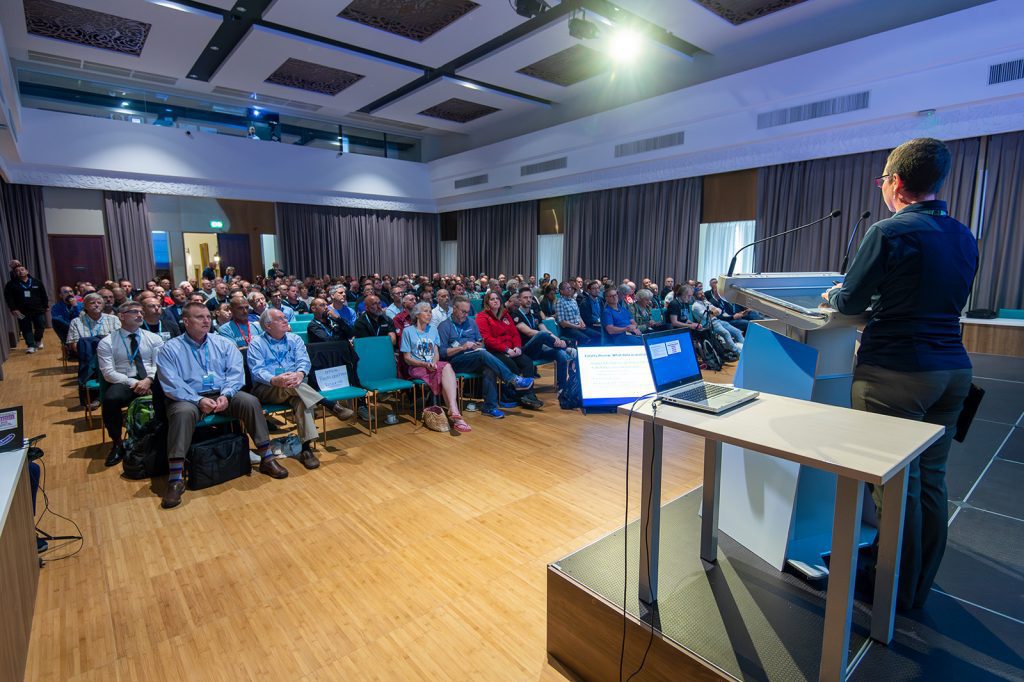
In parallel to Tillman’s data gathering in an effort spearheaded by Brian Carney, president, TDI, a group of training agencies agreed to submit their CCR training data from RF3 (2012) to 2022, to DEMA’s market research firm DP Research Solutions to consolidate and anonymize the agencies’ rebreather training data.
The analysis found agency rebreather certifications issued annually ranged from about 3,500 to 5,200 per year between 2012 and 2022, with 2022 being the strongest year for certifications. The data includes certifications from entry-level to advanced, submitted by training agencies BSAC, GUE, SDI/TDI, FFESSM, SSI, PADI, IANTD, and Dive RAID.
Next Steps
More information is needed to fully understand rebreather incident rates and the size of the market. To this end, the forum released industry consensus statements, intended to reflect widely supported opinions of RF4 participants, calling for more data collection and analysis.
“Analysis of contemporary rebreather accident data indicates a continued need for integrated effort to reduce the rates of injury, morbidity, and mortality associated with rebreather diving,” as one consent statement reads. “The analysis of accident, incident, and injury data from rebreather incidents should consider wider contextual elements and error-producing conditions and not just immediate contributory factors,” another states.
Tillmans said her priorities moving forward include the following:
- Implement an annual market size review involving manufacturers and training agencies moving forward.
- Improve accident/fatality reporting and consolidation of fatality and incident data at a central location; this will need continuous collaboration of different entities.
- Initiate studies to evaluate if safety procedures and standards are implemented and lived by in the CCR diving community.
To improve this data, RF4 participants agreed on a consensus statement advocating “self-reporting of diving mishaps and near-misses, and reporting of fatalities, to the DAN diving incident reporting system.”
The take-home message, Pollock said, is that meaningful insights do not need precise quantification, which represent “imperfect estimates at best.”
“An inability to quantify does not equate to an absence of knowledge,” Pollock said. “We need to work smartly with the information we have and can get to ensure the best understanding, and to promote the best practice. While doing that we need to continue to encourage as much useful reporting as possible.”
DIVE DEEPER
Academia.edu: Fock AW Analysis of recreational closed-circuit rebreather deaths. 1998-2010. Diving Hyperb Med 2013;43(2):78-85
BODI Survey: Expectations For Rebreather Forum 4 & A Glimpse Into The State of Rebreather Diving
InDEPTH: Improving Rebreather Safety: The View from Rebreather Forum 3
United States Parachute Association: How safe is Skydiving?
Skydiving Planet: Is Base Jumping Safe

InDepth Managing Editor Ashley Stewart is a Seattle-based journalist and tech diver. Ashley started diving with Global Underwater Explorers and writing for InDepth in 2021. She is a GUE Tech 2 and CCR1 diver and on her way to becoming an instructor. In her day job, Ashley is an investigative journalist reporting on technology companies. She can be reached at: [email protected]



















